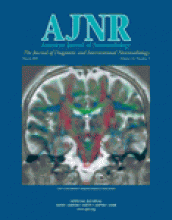Technologic limitations are sometimes a boon. Whether in medicine or in other areas of science, limitations prompt a search for new and improved solutions.
In surgical oncology, once techniques for removal of tumor-bearing cervical lymph nodes became part of standard medical practice, it was important to identify those nodes preoperatively. Clever minds have devised many approaches, but the large number of methods currently used to find cancer in lymph nodes testifies eloquently to how unsatisfactory the available options are. These methods can be divided into those that evaluate the anatomic aspects of nodes and those that assess the physiological behavior of tissue. Clinical palpation, for example, relies on anatomic features. Palpation uses no special equipment but does require extensive training and experience and still yields a discouragingly low accuracy.
CT and MR imaging have improved on that rather dismal statistic by applying a variety of anatomic criteria (size, shape, attenuation, originial intensity number) to differentiate normal from abnormal nodes. The inevitable tradeoff between sensitivity and specificity has limited the CT and MR imaging identification of tumor in cervical lymph nodes. If, for example, the cutoff for “normal” nodes is 0.5 cm, very few tumor-bearing nodes will be missed but many normal nodes will be misidentified as abnormal. Therefore, most radiologists use a higher cutoff. Sonography is subject to many of the limitations that plague CT and MR imaging. Color Doppler sonography evaluates the “angioarchitecture” of lymph nodes but is not widely used in this country.
Sentinel node imaging provides a “road map” of the lymphatic drainage from a tumor but no information regarding the presence or absence of tumor in those nodes. The technique entails injecting technetium-labeled sulfur colloid particles into and around a tumor. The particles migrate from the tumor into the draining lymphatics. Scintiphotos provide a map of the lymphatic drainage from the tumor, nothing more. Although this may be of use in identifying aberrant drainage pathways that would necessitate modifications of a planned neck dissection, sentinel node imaging provides no information regarding where or even whether tumor is present in nodes.
Elsewhere in the body, lymphangiography and lymphoscintigraphy have provided a combination of anatomic and physiological information about lymph nodes. Neither has proved especially useful in the neck, and both are invasive and can be technically difficult. MR imaging performed after the administration of superparamagnetic iron oxide particles, another hybrid of anatomic and physiological assessment, is still not fully evaluated or widely available. Metabolic (functional, physiological) imaging with fluorine-18-fluorodeoxyglucose positron emission tomography is new and promising. The limited anatomic detail that positron emission tomography provides will likely require correlation with CT or MR imaging to make it widely useful.
So where does this leave us? Radiologists who attempt to diagnose tumor in cervical lymph nodes and surgeons who plan surgery with that information require more sensitive and specific information than is currently available. A new technique is needed. Add to the wish list a technique that simply applies existing equipment and technology to better advantage.
Enter dynamic contrast-enhanced MR imaging. This method, evaluated in the current issue by Fischbein et al, combines the best features of dynamic contrast-enhanced CT with the improved tissue contrast of MR imaging to open up a brave new world. Dynamic contrast-enhanced MR imaging has already proved its merit in evaluating primary tumors in a variety of locations (brain, head and neck, breast, cervix, bladder, and prostate, among others) and in cases of metastatic adenopathy.
For reasons that are as yet incompletely understood, the current study found that tumor-bearing lymph nodes handled a contrast bolus differently from non-tumor-bearing nodes. The time to peak enhancement was longer for nodes that contained tumor, the peak was lower, and the washout of contrast material was slower. These distinct differences separate the abnormal nodes from the normal nodes.
Work remains to be done. The pathophysiological underpinnings of dynamic contrast-enhanced MR imaging are yet to be elucidated. Understanding the physiology might lead to treatment for tumor-bearing nodes or, even better, to prevention of metastases. A prospective comparison of dynamic contrast-enhanced MR imaging and conventional MR imaging should prove interesting, as will the comparison of dynamic MR imaging to fluorine-18-fluorodeoxyglucose positron emission tomography.
Dynamic contrast-enhanced MR imaging seems to be an important new direction that the accurate diagnosis of head and neck metastases will take. The article by Fischbein et al shows us that the time to start moving in that direction is now.
- Copyright © American Society of Neuroradiology












